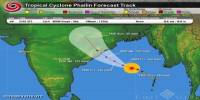According to a new study, the pulling of rope on marine boats might result in billions of microplastic pieces entering the water every year. The research, conducted by the International Marine Litter Research Unit at the University of Plymouth, is the first to look into the possibility of rope being a source of microplastic pollution in the ocean.
It assessed the number and characteristics of microplastics created while they were in use by comparing a range of synthetic ropes frequently used in the marine sector but varied in age, wear surface, and composition. This was accomplished by mimicking the rope pulling activity, which is commonly conducted onboard maritime vessels such as fishing boats, in both laboratory and field trials. The findings reveal that for every meter tugged, new and one-year-old ropes might discharge about 20 microplastic particles into the water.
If the twentieth century was the plastic industry’s revolution era, with too many plastic-based goods ranging from buckets to cars, the twenty-first century is the time to confront the repercussions. Improper management, a lack of knowledge about the detrimental effects of plastics, and irresponsible use, as well as the dumping of plastic items, have turned this world into a “plastic planet.”
However, as the rope ages, it might release a greater number of pieces. Ropes that are two years old shed about 720 pieces per meter on average, whereas ropes that are ten years old discharge more than 760 fragments per meter. According to experts writing in Science of the Total Environment, the rope length deployed during each haul in fishing activities may be up to 220m depending on the kind of vessel and the depth of the ocean.
They predict that each time a new rope is drawn from a boat, it might discharge between 700 and 2000 microplastic particles, based on a modest 50m of rope being dragged from a boat. Up to 40,000 pieces might be released from a used rope.
With over 4,500 operational fishing vessels in the UK, they estimate that the UK fleet alone may release anywhere from 326 million to 17 billion microplastic particles into the ocean each year.
Research Fellow Dr Imogen Napper, who led the study, said: “These estimates were calculated after hauling a 2.5kg weight. However, most maritime activities would be hauling much heavier loads, creating more friction and potentially more fragments. It emphasizes the urgent need for rope maintenance, replacement, and recycling standards in the marine sector. It does, however, highlight the necessity of continuing to innovate in synthetic rope design with the goal of reducing microplastic emissions.”
Microplastics can be found in a number of places, including bigger plastic trash that breaks down into smaller and smaller fragments. Microbeads, a kind of microplastic, are extremely small particles of manufactured polyethylene plastic used as exfoliants in health and beauty products such as cleansers and toothpaste. These microscopic particles easily bypass water filtering systems and wind up in the ocean and Great Lakes, presenting a risk to aquatic life.
The University of Plymouth received the Queen’s Anniversary Prize for Higher and Further Education in 2019 for being the first to identify the global problem of marine microplastics. Commercial fishermen are acutely aware of the potential for marine litter to inflict long-term harm to their catches and the larger sector, according to a previous study conducted in collaboration with the Fishing for Litter program.
The university is also focusing on developing biodegradable fishing gear that can be utilized by both small and large boats in the sector. The Department for Ecosystem, Food and Rural Affairs (Defra) financed this research as part of a larger initiative looking into the influence of tyres and textiles on the maritime environment.
Microplastics’ ability to absorb different hazardous hydrophobic pollutants from the surrounding environment transmits these contaminants into the food chain in an indirect manner. As a result, numerous laws and guidelines must be established to address the significant issue of microplastic contamination in the marine ecosystem. To avert future dangers, it is critical to stop producing it and replace it with environmentally acceptable alternatives.
















